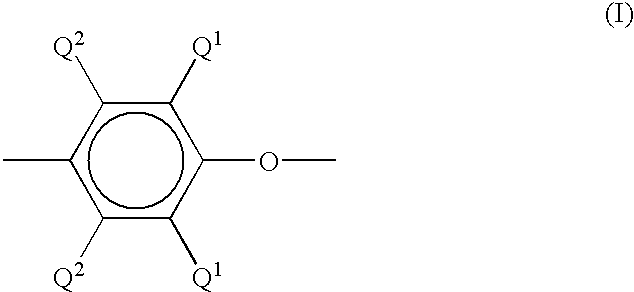Poly (arylene ether) and process for making the same
a technology of arylene ether and polymer, which is applied in the field of making poly (arylene ether) and the same, can solve the problems of reducing the purity of the final polymer
- Summary
- Abstract
- Description
- Claims
- Application Information
AI Technical Summary
Benefits of technology
Problems solved by technology
Method used
Image
Examples
Embodiment Construction
The resulting product was evaluated for black specs by VIR (Visual Inspection Rating) copper content by atomic absorption spectroscopy and for color by the Yellowness Index. The Visual Inspection Rating method is a physical count of the number of black specs in the final granules. The VIR was substantially reduced from a rating of normally 20-40 to a rating of 1. Yellowness Index is determined by dissolving 0.3 grams of poly(arylene ether) in 50 milliliters of toluene. The transmission of light through the solution is measured at 445 nanometers (nm), 555 nm and 600 nm. The Yellow Index is then calculated using the following formula: ##EQU1##
The following example was used to produce substantially pure poly(arylene ether): 500 kg of 2,6 xylenol was dissolved in 21,440 kg of toluene in a reaction vessel. 55 kg of cuprous bromide in 48% HBr aqueous solution, 11 kg of dibutylethylenediamine, 3 kg of quaternary ammonium salt in 29 kg toluene and 60 kg of dibutylamine were added to the xyl...
PUM
| Property | Measurement | Unit |
|---|---|---|
| boiling point | aaaaa | aaaaa |
| pressure | aaaaa | aaaaa |
| pressure | aaaaa | aaaaa |
Abstract
Description
Claims
Application Information
 Login to View More
Login to View More - R&D
- Intellectual Property
- Life Sciences
- Materials
- Tech Scout
- Unparalleled Data Quality
- Higher Quality Content
- 60% Fewer Hallucinations
Browse by: Latest US Patents, China's latest patents, Technical Efficacy Thesaurus, Application Domain, Technology Topic, Popular Technical Reports.
© 2025 PatSnap. All rights reserved.Legal|Privacy policy|Modern Slavery Act Transparency Statement|Sitemap|About US| Contact US: help@patsnap.com


